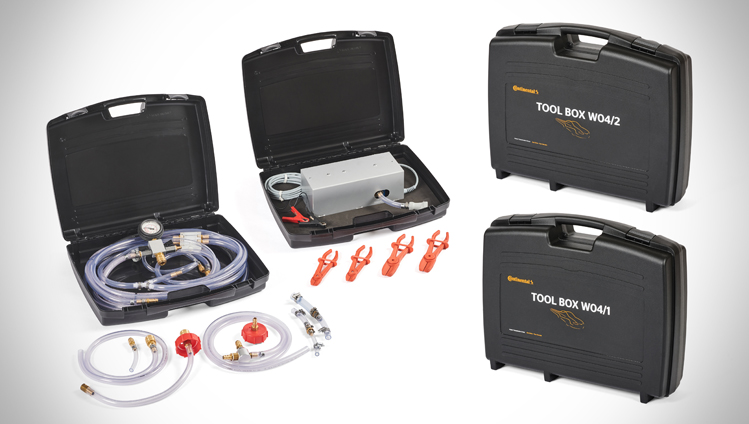
News
New TOOL BOX W04: flushing and refilling made simpler than ever
Automotive Aftermarket
New TOOL BOX W04: flushing and refilling made simpler than ever
Independent workshops are now also able to flush the cooling circuit of certain engines according to the manufacturer's specifications

One of the crucial steps when carrying out maintenance on cooling systems is to flush the system thoroughly. Doing so prevents premature failure of newly installed components after replacing parts such as the heat exchanger, water pump or charge air cooler. This is because coolant quality deteriorates over the course of vehicle operation due to the additives contained in the fluid breaking down over time, and corrosion, calcium scale, traces of oil and other particles contaminating the coolant. Flushing removes deposits from the cooling circuit and ensures flawless engine cooling and anti-freeze protection once it has been refilled. Fresh coolant additionally coats the surfaces of aluminum parts with a protective film that inhibits corrosion.
If a new part is fitted without changing the coolant, its surfaces will lack this protection. This is because the fluid remaining in the cooling circuit will have no more additives left for the new surfaces, as they will already have been used to coat the removed part. Plus, it’s no use simply pouring in extra coolant as the additives are not able to target just unprotected surfaces and settle on them. In short, there is only one solution for professional mechanics. Namely, drain everything, flush thoroughly and completely refill!
Flushing is often compulsory
This is why some manufacturers explicitly specify that certain engines must be flushed – as Volkswagen does for the EA288 and EA288 evo units, for example. And it is this requirement that has posed a problem for many independent workshops in the past, as usually only authorized workshops are able to obtain the right flushing device. Now, though, there is a compact solution designed to also allow independent workshops to flush these engines according to the manufacturer's specifications: the TOOL BOX W04 from Continental.
Two cases, one solution
Continental’s new flushing kit fits into two handy cases. These contain the flushing and vacuum unit together with all the hoses required. Mechanics will find the necessary adapters and connectors in TOOL BOX W01. “Many workshops already use this TOOL BOX for cooling system diagnostics, meaning they already have all the adapters,” explains product manager Maximilian Pape. “So we decided not to add these components to the new Tool Box W04 as well, to avoid needless duplicate purchases.” Now all that workshops need are the canisters for flushing and filling; the TOOL BOX even contains the requisite covers complete with connector.
The two boxes complement each other perfectly. The TOOL BOX W01 and the new TOOL BOX W04 provide mechanics with everything they need to carry out the complete flushing procedure, even when dealing with very intricate cooling systems – from bleeding and vacuum checking to creating a vacuum and the actual task of flushing. All connector systems and adapters have been designed so that they each fit just one mating part, thereby eliminating the possibility of connection errors.
Universal usability
Continental’s solution offers the added benefit of being universally suitable for all vehicles, and not just the aforementioned Volkswagen engines – an additional adapter also included with the kit allows the cooling system of non-VW vehicles to be flushed via the return line too. This is particularly important for older or second-hand cars. Maybe the previous owner topped up the system with hard water instead of distilled water. Or when fitting the water pump, the last workshop used sealing paste that has started to contaminate the coolant. TOOL BOXES W01 and W04 now enable workshops to put an end to the associated risks once and for all.
Venturi nozzle instead of an extra pump
“Instead of using an additional pump to create the vacuum, we have opted for a Venturi nozzle that is simply placed on the expansion tank,” explains Maximilian Pape. “This makes the complete system more compact and easier to use.” Speaking of ease of use: the manual supplied with the TOOL BOX describes exactly how to proceed.
‘Made in Germany’ seal of quality
TOOL BOX W04 is available from retailers now. All components are finished to a high standard and come with the ‘Made in Germany’ seal of quality.


